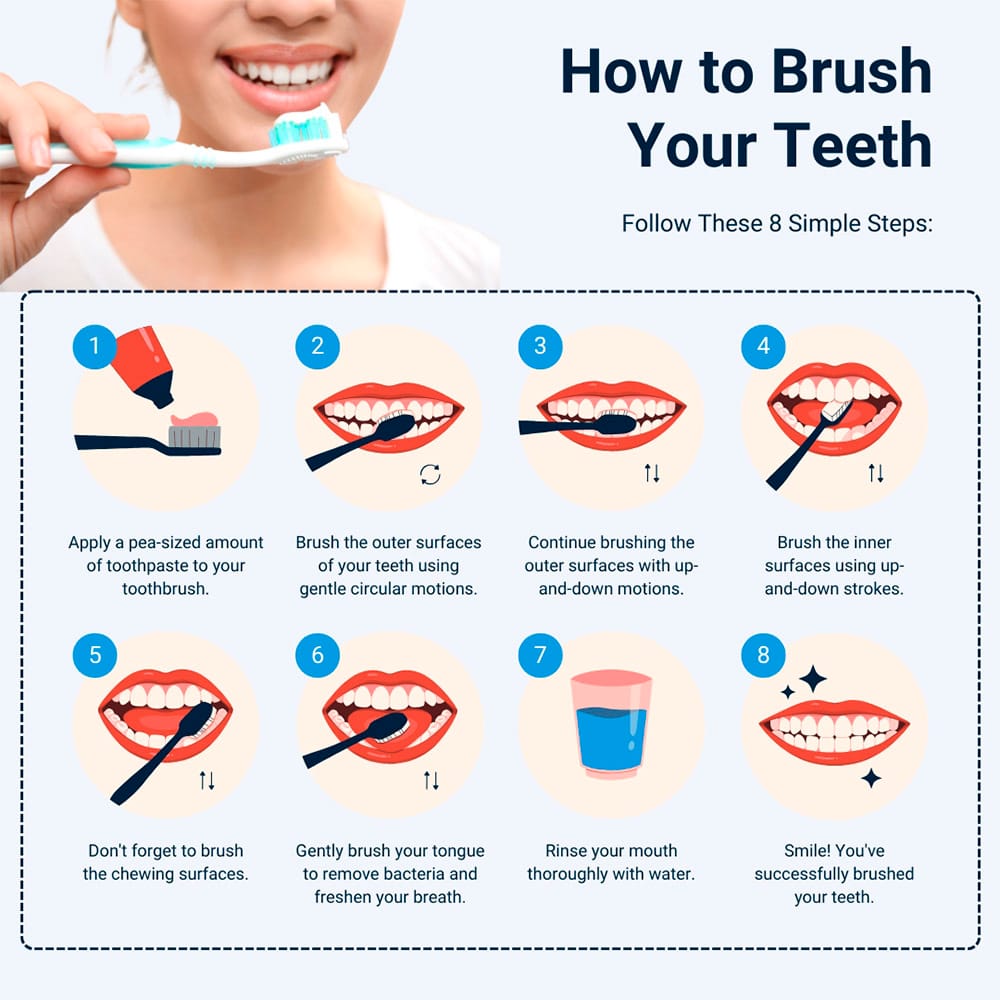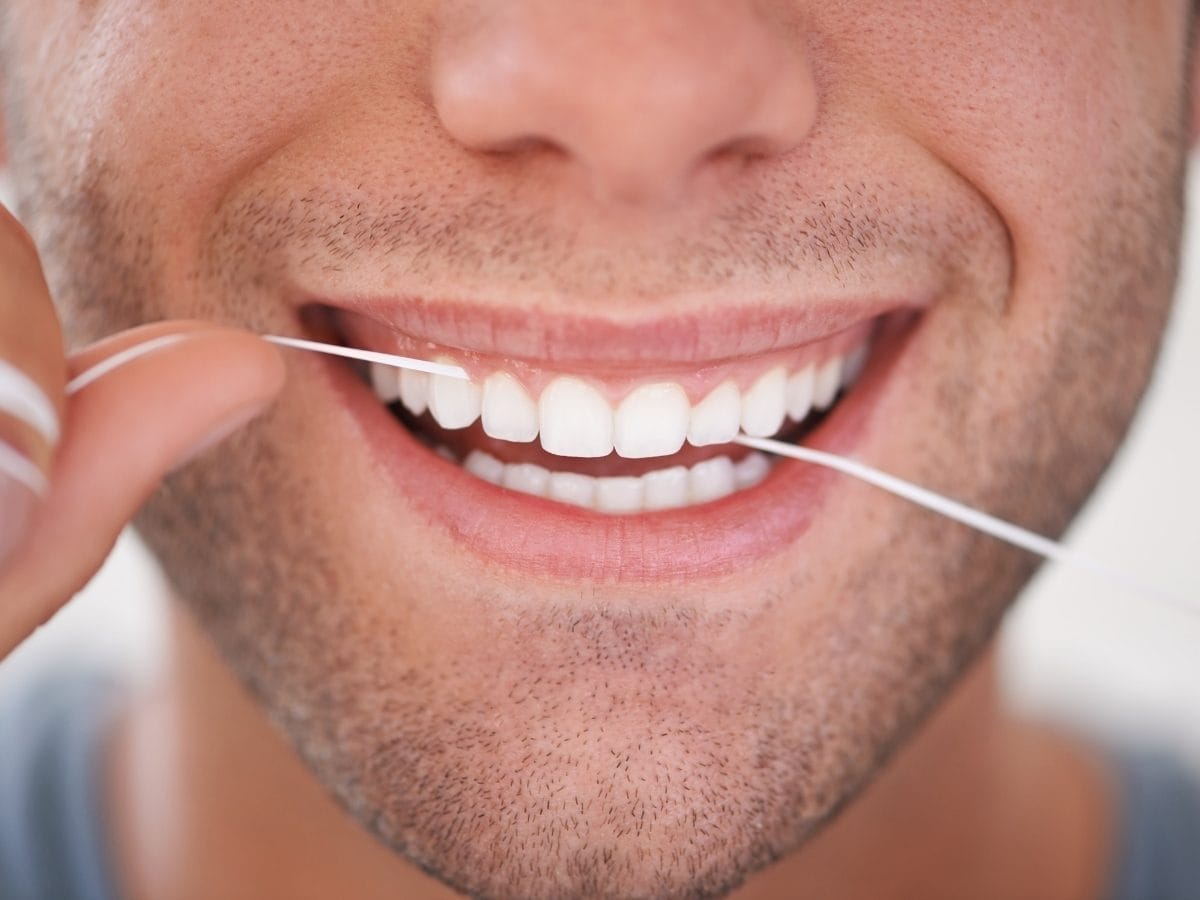
Methods of Oral Hygiene
Home hygiene includes brushing the teeth at least twice a day, and flossing them at least once a day. A dentist may also recommend using dental picks, a water-flossing device, or a fluoride mouthwash.
Toothbrushing
The outer surfaces of the teeth should be brushed using small, circular strokes that cover two to three teeth at a time. The toothbrush, which should have soft bristles, should be positioned at a 45-degree angle to the gum line. Gentle pressure should be applied to make sure the toothbrush cleans each tooth to the gum line.
To effectively clean the front teeth, the brush should be placed in a vertical position, and short strokes should be used. These up-and-down motions should be repeated over all teeth and gums in the front of the mouth.
The molars are used for chewing. Applying gentle pressure, the toothbrush should be moved back and forth, focusing on two to three teeth at a time. The brush should be repositioned frequently to ensure that it is reaching all surfaces. When brushing is complete, the mouth should be rinsed well to remove any food particles or plaque that has been loosened.
The dentist may recommend using an electric toothbrush that, when guided properly, performs the same functions with greater efficiency and effectiveness.
Flossing
Periodontal disease often begins as an inflammation of the gums. This inflammation is usually caused by a buildup of plaque between the teeth and gums. Flossing is one of the most effective methods for removing plaque from the hard-to-reach surfaces between the teeth and near the gums. A proper flossing technique is important.
Approximately 18 inches of floss should be used. The floss should be placed between the teeth by using a gentle back-and-forth motion. The floss should be moved very gently to the gum line, and then moved around the edge of the tooth. A sliding up-and-down motion that extends the floss slightly into the gum line should be used. The floss should then be lifted above the gums, and contoured around the edge of the next tooth, repeating the process. Both sides of every tooth should end up flossed. The floss should not be pressed too firmly into the gums because it may cut the delicate gum tissue.
After flossing is complete, the mouth should be rinsed with water to get rid of any plaque or food particles that were dislodged. When a person first starts a flossing routine, the gums may bleed or feel sore. With daily flossing, gums become less sensitive, and the bleeding should stop.
Caring for Sensitive Teeth
After a dental treatment, teeth may become sensitive to hot and cold. This is usually short-lived as long as the mouth is kept clean. If teeth are regularly very sensitive, the problem should be discussed with a dentist, who may recommend using medicated toothpaste, or a mouth rinse designed for sensitive teeth. It is important for patients with sensitive teeth to treat the problem because sensitivity may prevent them from brushing as regularly as they should.
Eating balanced meals and fewer sugary snacks, and brushing more frequently, can also help improve dental hygiene. Dentists provide patients with specific instructions for at-home care of the teeth; it is important to follow these instructions to ensure good dental health. At Clock Tower Dental, we emphasize personalized care and guidance to help you maintain a healthy, beautiful smile.

